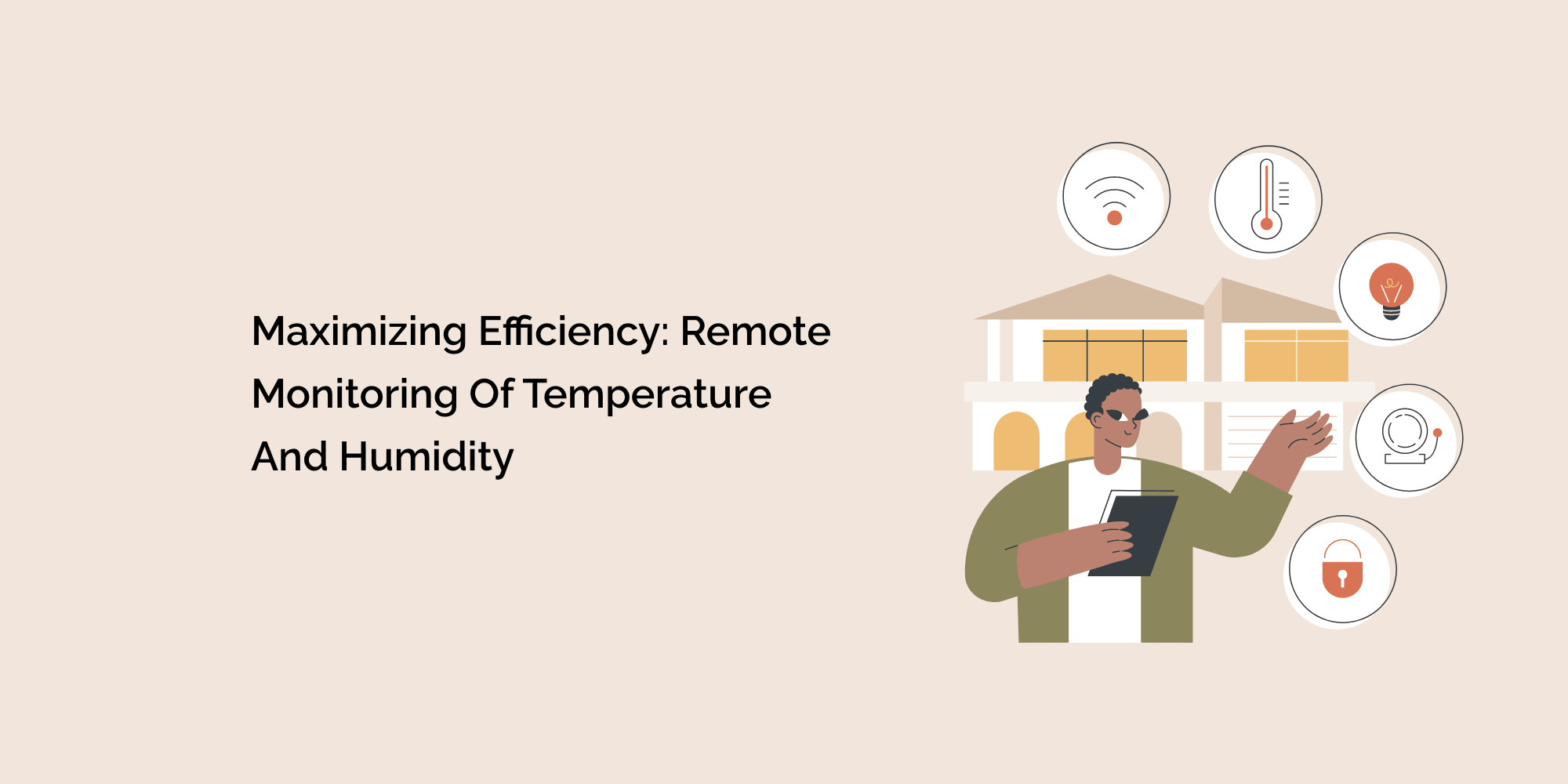In today's technologically advanced world, remote monitoring has become an invaluable tool for optimizing efficiency in various domains. One area where remote monitoring proves particularly beneficial is in tracking temperature and humidity levels. In this blog, we will explore the concept of remote monitoring for temperature and humidity, its significance, and how it contributes to maximizing efficiency in different environments.
Understanding the Importance of Temperature and Humidity Monitoring
Temperature and humidity are crucial in numerous applications, including manufacturing, healthcare, laboratories, and residential settings. We'll discuss these factors' impact on product quality, human comfort, equipment performance, and overall operational efficiency. By understanding their importance, we can better appreciate the value of remote monitoring.
The Power of Remote Monitoring
Remote monitoring empowers users to track temperature and humidity levels anywhere, anytime. We'll delve into its benefits, such as real-time data access, timely alerts, proactive problem-solving, and optimized resource management. By remotely monitoring these environmental parameters, organizations can enhance operational efficiency, reduce costs, and improve productivity.
Wireless Sensor Networks for Remote Monitoring
Wireless sensor networks provide a practical solution for remote temperature and humidity monitoring. We'll explore how these networks work, consisting of sensors strategically placed to collect data and transmit it wirelessly to a central hub. This technology enables users to access real-time data, set customized thresholds, and receive alerts, contributing to efficient decision-making.
Internet of Things (IoT) Solutions for Remote Monitoring
IoT-based solutions have revolutionized remote monitoring capabilities. We'll discuss how IoT devices and cloud platforms enable seamless connectivity, data aggregation, and real-time analytics. With IoT solutions, users can remotely monitor temperature and humidity, gather valuable insights, and implement data-driven strategies to maximize efficiency.
Cloud-Based Platforms for Remote Monitoring
Cloud-based platforms offer centralized access to temperature and humidity data, making it accessible anywhere with an internet connection. We'll explore the benefits of cloud-based remote monitoring, including data storage, analysis tools, and collaborative features. These platforms enable users to monitor trends, generate reports, and optimize operational efficiency.
Mobile Applications for Remote Monitoring
Mobile applications play a crucial role in remote monitoring. We'll discuss how dedicated apps with temperature and humidity sensor integration allow users to monitor conditions using smartphones or tablets. Mobile apps provide real-time data, customized alerts, and user-friendly interfaces, empowering users to stay connected and take prompt actions to maximize efficiency.
Benefits of Remote Monitoring in Different Environments
We'll explore the benefits of remote temperature and humidity monitoring in various environments. From manufacturing facilities optimizing production processes to healthcare facilities ensuring patient comfort and safety, remote monitoring offers efficiency gains, cost savings, and improved outcomes across diverse sectors.
Best Practices for Remote Monitoring
To maximize the effectiveness of remote monitoring, adherence to best practices is essential. We'll discuss critical considerations such as selecting reliable sensors, ensuring proper sensor placement, regular calibration, setting appropriate alert thresholds, integrating monitoring into existing systems, and periodic review of data trends. Following these best practices ensures accurate and reliable tracking, enhancing efficiency.
Overcoming Challenges in Remote Monitoring
While remote monitoring offers numerous benefits, there can be challenges to overcome. We'll address obstacles like connectivity issues, data security, and system compatibility. Organizations can ensure uninterrupted and secure remote monitoring operations by understanding these challenges and implementing appropriate solutions.
Embracing Efficiency with Remote Monitoring
Remote monitoring of temperature and humidity is a game-changer for maximizing efficiency. Organizations can gain real-time insights, optimize operations, and make data-driven decisions by leveraging wireless sensor networks, IoT solutions, cloud-based platforms, and mobile applications. Remote monitoring enables proactive actions, resource optimization, and cost savings while ensuring optimal environmental conditions.
Certainly! Here are some frequently asked questions (FAQs) about remote monitoring of temperature and humidity:
What is remote monitoring of temperature and humidity?
Remote monitoring of temperature and humidity refers to remotely tracking and monitoring these environmental parameters. It involves using sensors and connected devices to collect data, transmit it wirelessly, and provide real-time access to information from anywhere.
Why is remote monitoring of temperature and humidity critical?
Remote monitoring is essential because it enables real-time visibility into temperature and humidity levels without physical presence. It allows for proactive management, early detection of issues, and timely response to fluctuations, maximizing efficiency and minimizing risks in various applications.
What are the benefits of remote monitoring?
Remote monitoring offers several benefits, including real-time data access, timely alerts, proactive problem-solving, cost savings, optimized resource management, and improved decision-making. It empowers organizations to make informed choices, optimize operations, and enhance efficiency.
Conclusion
Remote temperature and humidity monitoring offers unprecedented opportunities for maximizing efficiency in various environments. By remotely monitoring these crucial environmental parameters, organizations can optimize operations, enhance productivity, reduce costs, and improve decision-making. Wireless sensor networks, IoT solutions, cloud-based platforms, and mobile applications provide the tools for efficient remote monitoring. By embracing these technologies and following best practices, organizations can stay connected, make informed decisions, and unlock the full potential of remote monitoring for temperature and humidity. Maximize efficiency by harnessing the power of remote monitoring and opening a new level of operational excellen








